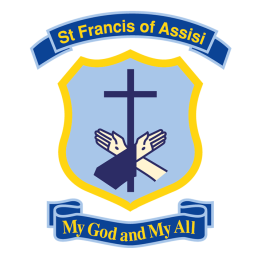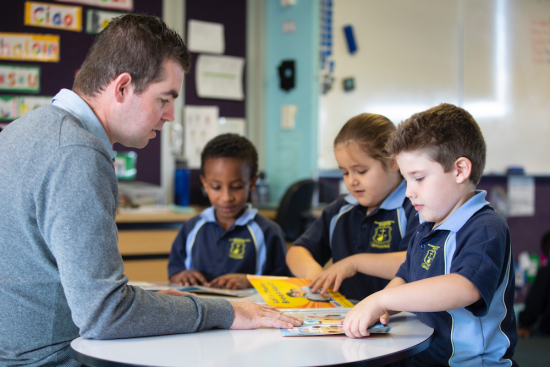
St Francis
of Assisi
Warrawong
of Assisi
Warrawong
A Catholic Parish Primary School
 St Francis of Assisi Catholic Primary School, Warrawong is registered by the NSW Education Standards Authority (NESA) and is subject to its curriculum requirements.
St Francis of Assisi Catholic Primary School, Warrawong is registered by the NSW Education Standards Authority (NESA) and is subject to its curriculum requirements.
NESA sets and monitors quality teaching, learning, assessment and school standards.
It is also responsible for developing Kindergarten to Year 12 syllabuses for NSW schools.
English is the Key Learning Area where students develop knowledge skills and understandings about English language and literature. The outcomes and content in the English K-6 syllabus are organised in three strands:
The outcomes describe the knowledge, skills, understandings and strategies that students demonstrate when learning to talk, listen, read and write. They also specify the knowledge and understandings students develop when learning about talking, listening, reading and writing. These outcomes are achieved as students engage with the content of the syllabus.
The aim of the school's English program is to develop competence in the uses of language, and to encourage positive attitudes towards learning English, to develop students' ability in using language effectively and to enable critical reflection on how language works.
Students are guided in using language to learn in all areas of the curriculum:
Mathematics involves the development of students’ thinking, understanding, competence and confidence in the application of Mathematics, their creativity, enjoyment and appreciation of the subject and their engagement in life-long learning.
The broad strands of Mathematics are:
Science and Technology is the learning area in which all students learn about the natural and made environments by investigating, by designing and making and by using technology. Learning in Science and Technology will draw on and contribute to learning related to the other five Key Learning Areas.
Technology is concerned with the purposeful and creative use of resources in an effort to meet perceived needs or goals. It extends beyond the tools and technical inventions of a society and involves the application of human skills, knowledge, techniques and processes to expressive and practical problem-solving situations in all aspects of human life.
The four broad strands of Science and Technology are:
In History and Geography, students' enhanced sense of personal, local community, national and global identity enables them to participate effectively in maintaining and improving the quality of their society and physical environment.
The four broad strands of HSIE are:
The school’s Personal Development, Health and Physical Education (PDHPE) program aims to develop in each student the knowledge, skills and attitudes needed to understand, value and lead healthy and fulfilling lives. In doing so, the syllabus will form the basis for students to adopt a responsible and productive role in society.
This aim will be achieved by developing in each student self-esteem, social responsibility and wellbeing; movement skill and personal fitness; and the ability to make informed health and lifestyle decisions.
There are eight content strands:
Creative Arts enables students to gain increasing understanding and accomplishment in:
The Creative Arts program allows students to appreciate the meanings and values that each of the art forms offer personally, culturally and as forms of communication.
In addition, at St Francis of Assisi a course in Religious Education is taught in theory and practice.
The primary (K-6) curriculum is organised into four Stages of learning:
|
Early Stage 1 |
Kindergarten |
|
Stage 1 |
Year 1 and Year 2 |
|
Stage 2 |
Year 3 and Year 4 |
|
Stage 3 |
Year 5 and Year 6 |
Most students will be working towards the outcomes for their Stage. Some students will be working towards outcomes that are above or below their Stage.
For more information on the NSW curriculum, visit the NESA website, and the following NESA pages:
Did You Know: St Francis of Assisi is committed to working in partnership with families and community in welcoming Aboriginal and Torres Strait Islander students – supporting them to reach their full potential and to embrace their culture and identity. Read more here